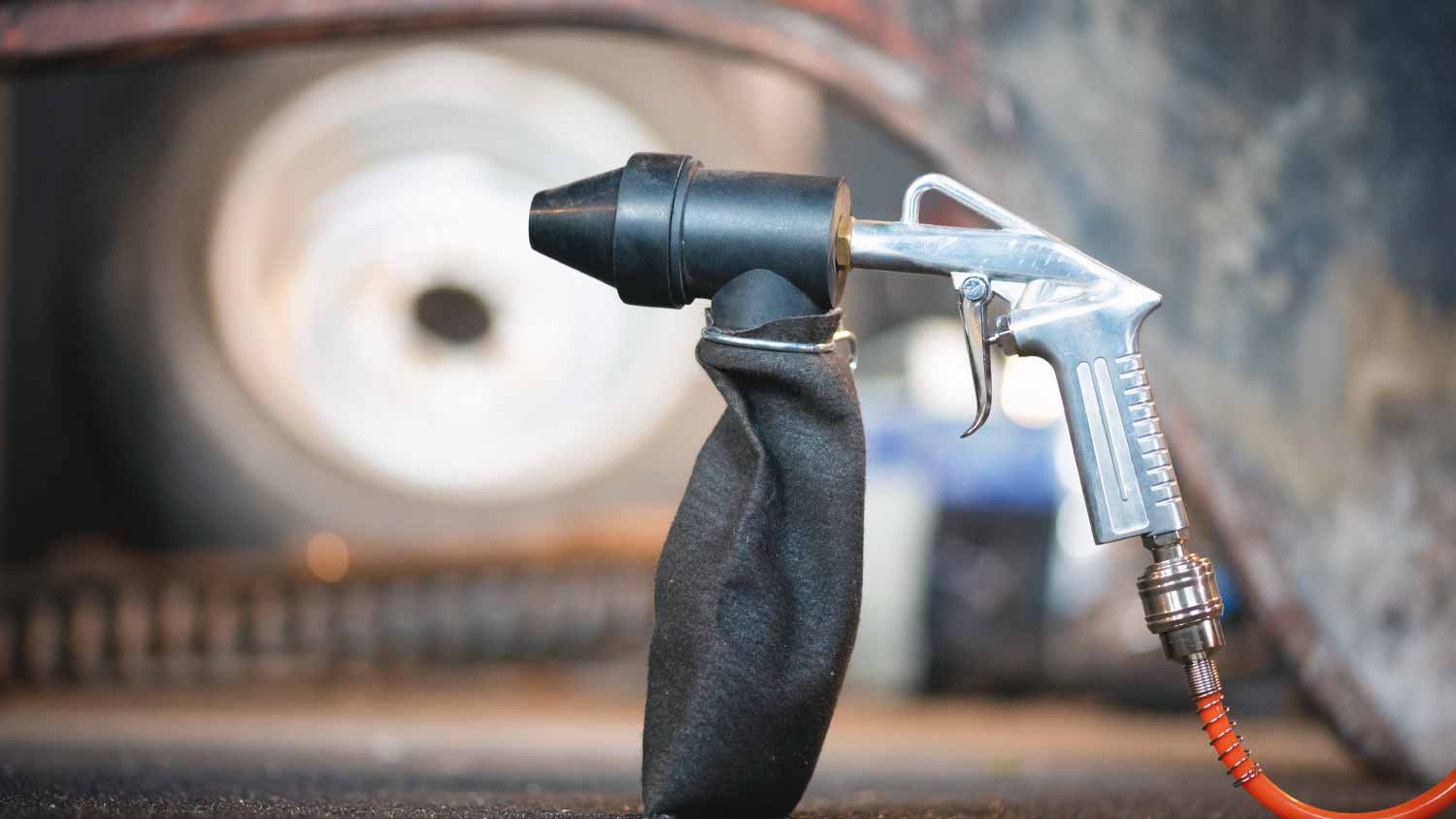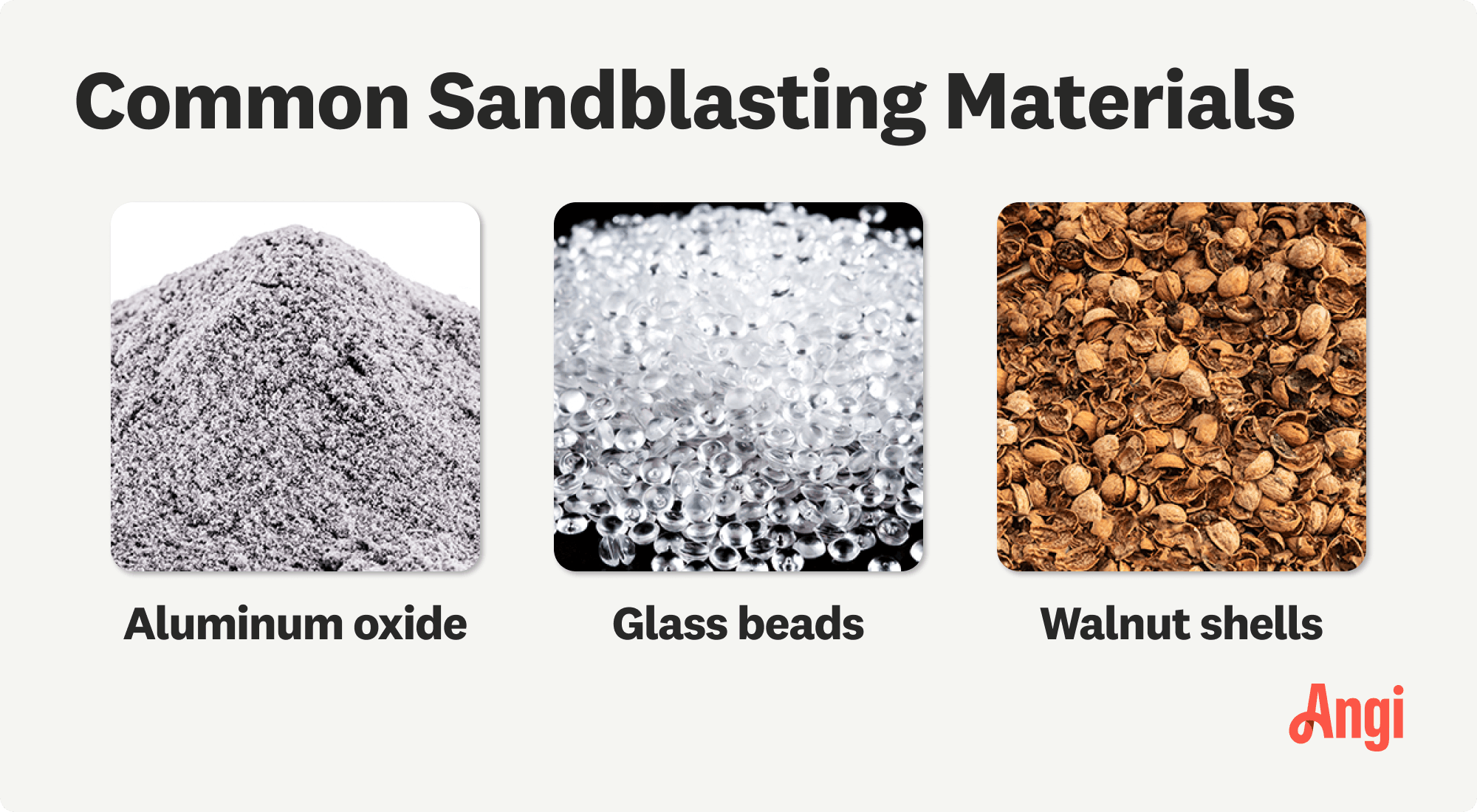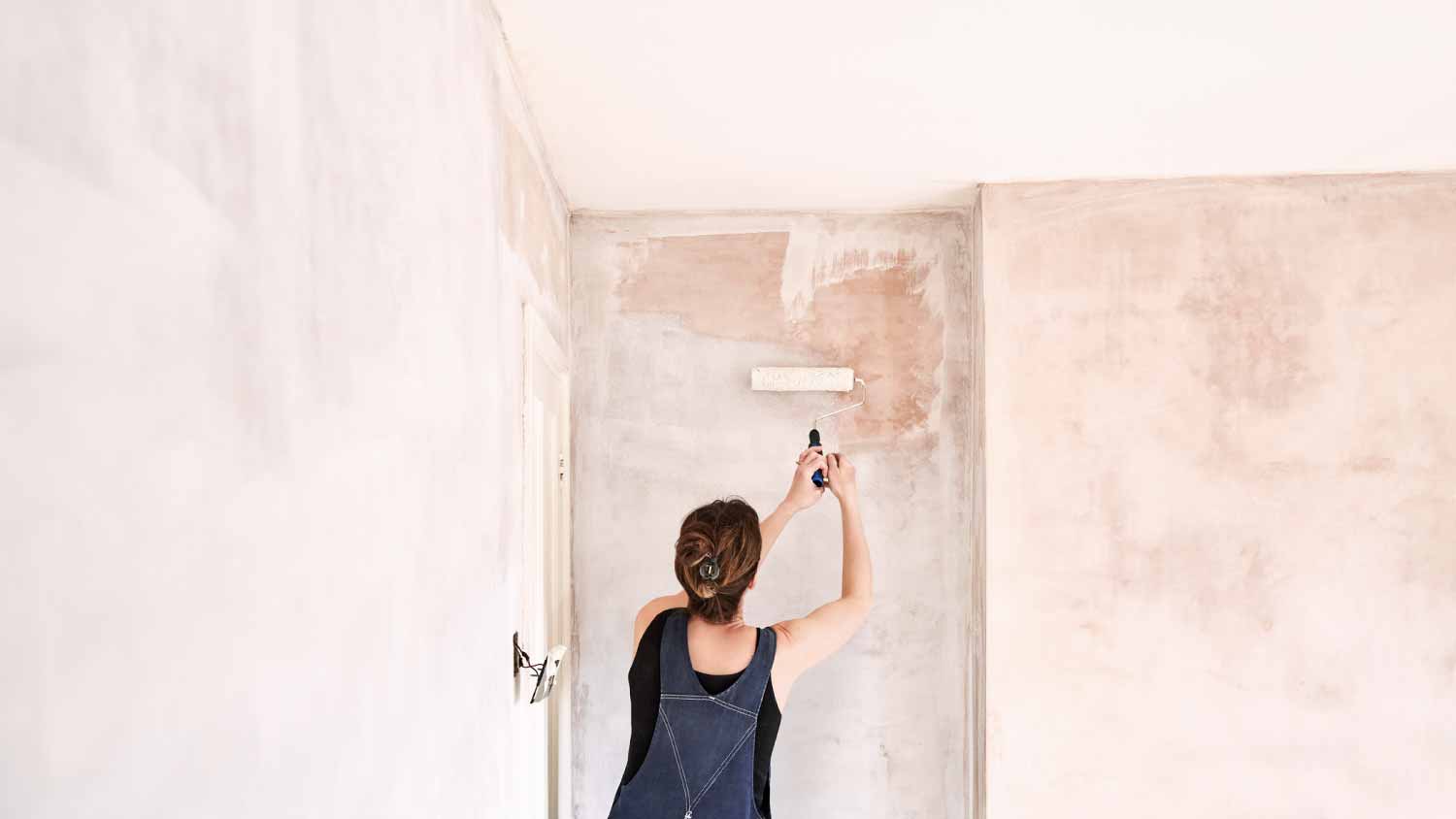
The cost to paint the interior of a house in Philadelphia, depends on size, layout, type of surface, and more. Learn what factors can influence your total in this guide.
That old paint won't know what hit it


Dry ice cleaning is a newer deep cleaning method that uses carbon dioxide.
Sandblasting uses fine pieces of silica or other materials to get a deep clean.
Each option has its benefits and drawbacks, depending on the application.
Neither option is good for DIY—you'll need to call a pro for this project.
If the paint on the exterior of your home is looking a little (or a lot) worse for wear, it's time for a facelift. Just as you'd want to exfoliate the skin before any cosmetic treatment, you'll need to exfoliate your home's facade to slough away the old, tired coat of paint. You have a few options for doing so: dry ice cleaning versus sandblasting. Learn how they compare and which is the better option for your painting project.
The big difference between dry ice cleaning and sandblasting is the materials used to remove paint or other contaminants from a surface. Dry ice cleaning uses a solid form of carbon dioxide, aka dry ice, to deep clean. Sandblasting, on the other hand, uses an abrasive material to deep clean surfaces and remove paint.
Dry ice cleaning uses high pressure to spray frozen carbon dioxide (CO2) onto a surface. When the frozen CO2 comes into contact with a surface, it immediately sublimates, or changes form from a solid to a gas. The contact between the surface and the very cold CO2 causes thermal shock, which loosens up dirt and paint particles, so that they come off easily.
| Pros | Cons |
|---|---|
| Non-abrasive | Higher cost |
| Reduced injury risk | Environmental concerns |
| Efficient | Doesn't work on all materials |
Best for: Homes with sensitive materials that may be damaged by abrasive cleaning
A major benefit of dry ice cleaning is its non-abrasive nature. Since the CO2 instantly transforms from solid to gas upon contact, there's no scrubbing or potential risk of damage to the surface beneath the paint.
Also, as the process doesn't spray tiny particles at a surface, there's a reduced chance of the person doing the cleaning getting hit or injured by any materials. Dry ice cleaning is a relatively efficient cleaning method, too, as there's little to no clean-up required afterward.
The major drawback of dry ice cleaning is that it requires dry ice, which can be difficult to find. The company doing the cleaning also needs to purchase specialized equipment, which can add to the overall cost.
Dry ice may not be able to effectively remove certain types of paint, such as oil-based paint, from a surface. Since the main ingredient is carbon dioxide, a greenhouse gas, it also raises environmental concerns.

Sandblasting is an older method of paint removal that directs a spray of hard particles at a surface. The particles scrub the surface clean, removing paint, dirt, and other debris. Traditionally, silica was used during sandblasting, but now other materials are available, such as crushed walnut shells, aluminum oxide, and plastic bits.
| Pros | Cons |
|---|---|
| Cost-effective | Abrasive |
| Multiple applications | Can produce dust |
Best for: Homeowners looking for an effective, low-cost paint removal option
The big benefit of sandblasting is that it's cost-effective compared to dry ice cleaning. The cost of sandblasting depends on several factors, but you can expect to pay between $1.50 and $7 per square foot. Dry ice cleaning is often pricier than that.
Sandblasting can also remove materials, such as oil-based paint, that dry ice cleaning cannot. It's appropriate for use on various surfaces.

The two main drawbacks of sandblasting are that it can be messy, and the abrasive materials used can damage the surface underneath the paint. When sandblasting, it's important to wear the appropriate protective gear to prevent inhalation of the particles. Gentler sandblasting alternatives, such as soda blasting, can be one way to avoid excessive dust production.
So, between dry ice cleaning and sandblasting, which should you choose? Dry ice cleaning wins in some categories, while sandblasting takes the prize in others.
Thanks to its relative newness, the specialized equipment it requires, and the need for dry ice, dry ice cleaning tends to have a higher price tag than sandblasting.
However, that higher price tag may be worth it if you're removing paint from a particularly delicate surface that could be damaged by a particle spray.
You could feasibly rent the equipment required to sandblast the paint off your house, but it's generally not a good idea to do so. From safety concerns to the risk of damaged surfaces, there's just too much that could go wrong. Dry ice cleaning is also not a project you want to tackle on your own (see the above-mentioned need for special equipment and dry ice).
If you want someone to safely and effectively remove an old coat of paint, your best bet is to hire a local paint stripping professional.
Both dry ice cleaning and sandblasting are effective methods for removing paint. The processes work quickly and prevent the worker from having to scrape or strain to get the paint off.
Where one method might be more effective than the other depends on the materials beneath the paint and the paint itself. Dry ice cleaning is usually most effective on delicate surfaces, while sandblasting is more effective at removing oil-based paints.
Both methods of paint removal bring up environmental concerns. Dry ice cleaning can be potentially concerning since it does release a greenhouse gas into the air. One way to improve the sustainability of dry ice cleaning is for the company that performs it to use recycled CO2, which is captured from other applications, so that no new CO2 is released into the air.
The environmental concern from sandblasting comes from the particles used. Some types of particles, such as silica, aren't biodegradable. They also produce a lot of dust during the process, which can cause respiratory problems.
However, more eco-friendly sandblasting options are available, such as crushed walnut shells or corn cobs, which will biodegrade.
Even though it uses a gas that's been frozen to -109°F, dry ice cleaning is the safer of the two paint removal options, since it doesn't produce clouds of dust or flying debris during the process.
That said, paint strippers using sandblasting take precautions, such as wearing safety goggles and other protective gear, and securing the area around them, to ensure that the risk of injury during the cleaning process is minimized.
From average costs to expert advice, get all the answers you need to get your job done.

The cost to paint the interior of a house in Philadelphia, depends on size, layout, type of surface, and more. Learn what factors can influence your total in this guide.

The cost to paint the interior of a house in Charlotte, NC depends on size, layout, type of surface, and more. Learn what factors can influence your total in this guide.

Limewash can add timeless texture to your living space. The cost to limewash interior walls depends on factors like surface area, materials, and prep work.

Paint sprayers work faster than paint brushes or rollers, but only if you use them correctly. Here are some tips to learn how to use a paint sprayer.

Are you asking yourself, “What is limewash paint?” Learn more about this timeless paint, sometimes called whitewash, before using it in your next project.
.jpg?impolicy=leadImage)
Painting your kitchen cabinets may take some elbow grease, but you’ll get a kitchen makeover without a lot of money. Here’s how to paint cabinets for a new look.